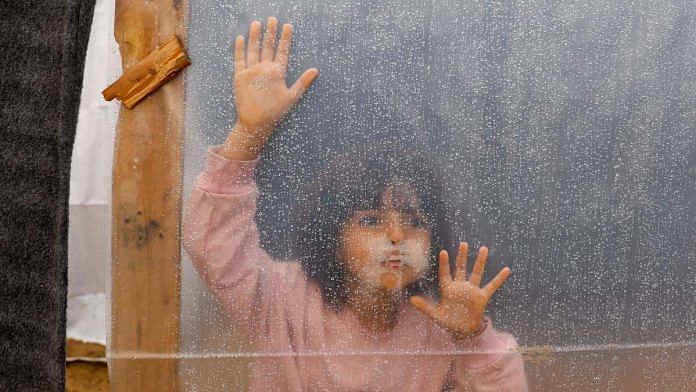Thank you dear subscribers, we are overwhelmed with your response.
Your Turn is a unique section from ThePrint featuring points of view from its subscribers. If you are a subscriber, have a point of view, please send it to us. If not, do subscribe here: https://theprint.in/
If I had a choice, I would choose the photo of the three-year-old Aylan Kurdi whose body was lying dead on the Turkish shores, half in sand and half in water. His face is sideward while his lifeless little feet are still wearing sneakers. His family, with the little boy, was fleeing their war-torn country hoping to reach a safer place. That picture, published in September 2015, is a revolting reminder that this civilization is undergoing a very basic, humane crisis, and amidst all the hullabaloo of modernity, we must not let this reminder pass. The Turkish photographer Nilüfer Demir who clicked that picture later said, “It was like a children’s graveyard.”
While the picture of Aylan Kurdi evoked immense sadness globally, it surely wasn’t enough to make mankind feel ashamed of failing that little boy and millions like him. That picture could have been one of the last ones to show children lying dead on shores, in submerged boats, in war fields and amid landmines.
The frame of reality, however, continues to bleed even after almost three decades.
The United Nations Secretary-General Antonio Guterres said last week that Gaza is becoming the graveyard for children. The term rings a bell, but it seems to neither ring our conscience nor humanity.
Over 4,000 children have been killed in Gaza alone. These are official figures, and we know the huge chasm that is almost always there between the official and what is real.
In the last 30 years, the number of countries in the middle of conflicts has been the highest and according to UNICEF, more than 30 million children have been displaced by conflict. Many of them are being enslaved, trafficked, abused and exploited even as you read this.
Even as the original numbers are much higher, the estimates screech an ugly number too. Between 2005 and 2022, more than 3,15,000 grave violations were verified children in conflict situations in Africa, Asia, the Middle East, and Latin America.
According to the United Nations, the number of children killed in Ukraine in the country’s war with Russia is over 1,500 in the last 15 months of the war. Over two million children have been forced to flee from the country, and over three million have been displaced internally. Closer home, over 10,000 children have been displaced as a result of the Manipur violence.
The easiest and the most convenient way out of this crisis is to treat it as none. Unfortunately, this seems to be the way a large part of the world has opted for. But this cannot be accepted. Children becoming the frontline victims of wars and conflicts, that ironically they don’t have any role to play in, should weigh heavy and unbearable on each one of us.
With Instagram flooded with reels showing crying, shivering, dead children, how easy is it to scroll to the next reel, thought or victory? We either are living in a fool’s paradise or we have dangerously accepted the world sans safety for every child, a normal trend. In either case, we stand fallen.
There need to be stricter guidelines if we want to save our children and keep the hope for the future alive. The movement has to come from all levels and not just governments. We cannot turn our faces to this humanitarian crisis claiming it doesn’t concern us or that it is too complex or political to take up.
But the beginning of the end of child victims of conflicts has to begin now, by us and from the place of compassion, because being sad is not enough anymore.
At the International Labour Organization, Geneva on June 12 this year, Indian Nobel Laureate Kailash Satyarthi had put forth a rather astounding fact. He said that if all the nations together provided $53 billion, which is less than ten days of global military expenditure annually, the world could ensure education, healthcare, and protection for all the children in the world. He, along with 103 Nobel Laurate, recently appealed to the world to treat all children, stuck in the Israel-Gaza conflict, as “our” children. But that seems to be a difficult task. It is difficult for grown-ups blinded and deafened by their grown-up agendas to look at children as just that.
Saving children from wars is not a problem that can’t be solved. But finding the will is a rather tricky ingredient. Politics and strategies often come in the way of what needs to be done and what should be done. Meanwhile, the world continues to celebrate Children’s Day but should we? In the times when we have collectively, consciously, cowardly shut our ears to their screams, and closed our hearts to their plights, we don’t deserve children.
These pieces are being published as they have been received – they have not been edited/fact-checked by ThePrint.

